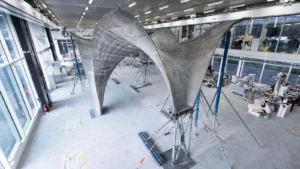
Lighting has developed beyond its fundamental purpose of illuminating. Smart lighting systems are now redefining environments by boosting ambience, promoting efficiency, and greatly increasing energy savings. Lighting is a major factor in forming the environment and affecting how it is experienced, whether it is a business workplace, industrial site, or home area. Well-thought-out smart lighting systems help to save money and promote sustainability as well as provide control and flexibility. Modern systems are designed to fit certain needs, from simple automation to reactive lighting settings. Smart Landscape and security lighting also help outdoor spaces significantly by preserving energy while enhancing safety and beauty.
Enhancing Ambiance with Smart Control
Any area needs the correct mood; hence, smart lighting offers a dynamic and configurable ambiance. Spaces can be changed to fit various moods or goals by means of brightness, color temperature, and timing changes. From bright, concentrated lighting for a cooperative office to soft, warm lighting for a welcoming lobby, smart systems offer simple flexibility. Scenes can be pre-programmed for various times of day or occasions, so guaranteeing consistent and attractive lighting all through. This adaptability not only improves visual attractiveness but also helps to create a more interesting and pleasant space for users.

Boosting Productivity Through Innovation
Smart lighting actively promotes production rather than just aesthetic appeal. In workplaces, lighting can be adjusted to minimize glare, avoid eye fatigue, and offer steady task illumination. Automated systems can guarantee the appropriate lighting conditions at all times by responding to occupancy, natural light levels, and time schedules. Smart controls integrated allow for smooth operation and let central systems or mobile devices make modifications. Furthermore, Landscape and security lighting around business properties not only guarantees safety but also increases operating efficiency by automatically changing to external circumstances, hence lowering the need for manual control.
Energy Efficiency for Sustainable Growth
Smart lighting’s contribution to energy efficiency is among its most notable benefits. Smart systems cut needless energy use by use of sophisticated sensors and automation. Dimming or turning off lights in vacant areas and adjusting based on daylight availability helps to reduce electrical use. Eventually, this results in significant cost savings and helps projects for sustainability to be supported. Energy-efficient lighting not only cuts power costs but also prolongs the life of the lights, hence lowering maintenance expenses. Smart lighting systems combine technology, design, and utility to produce efficient yet motivating environments. Lighting may be a strong instrument to improve the user experience as well as operational performance with careful integration and strategic planning.




















